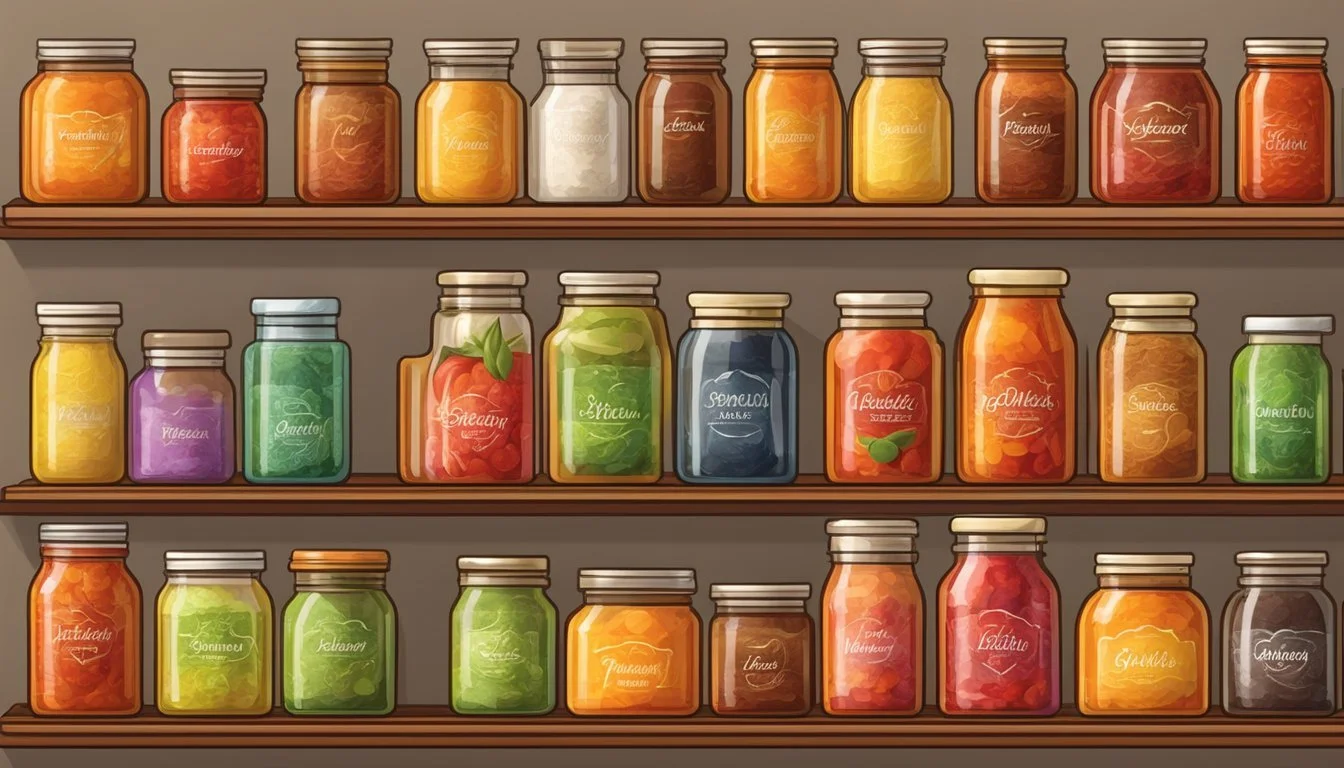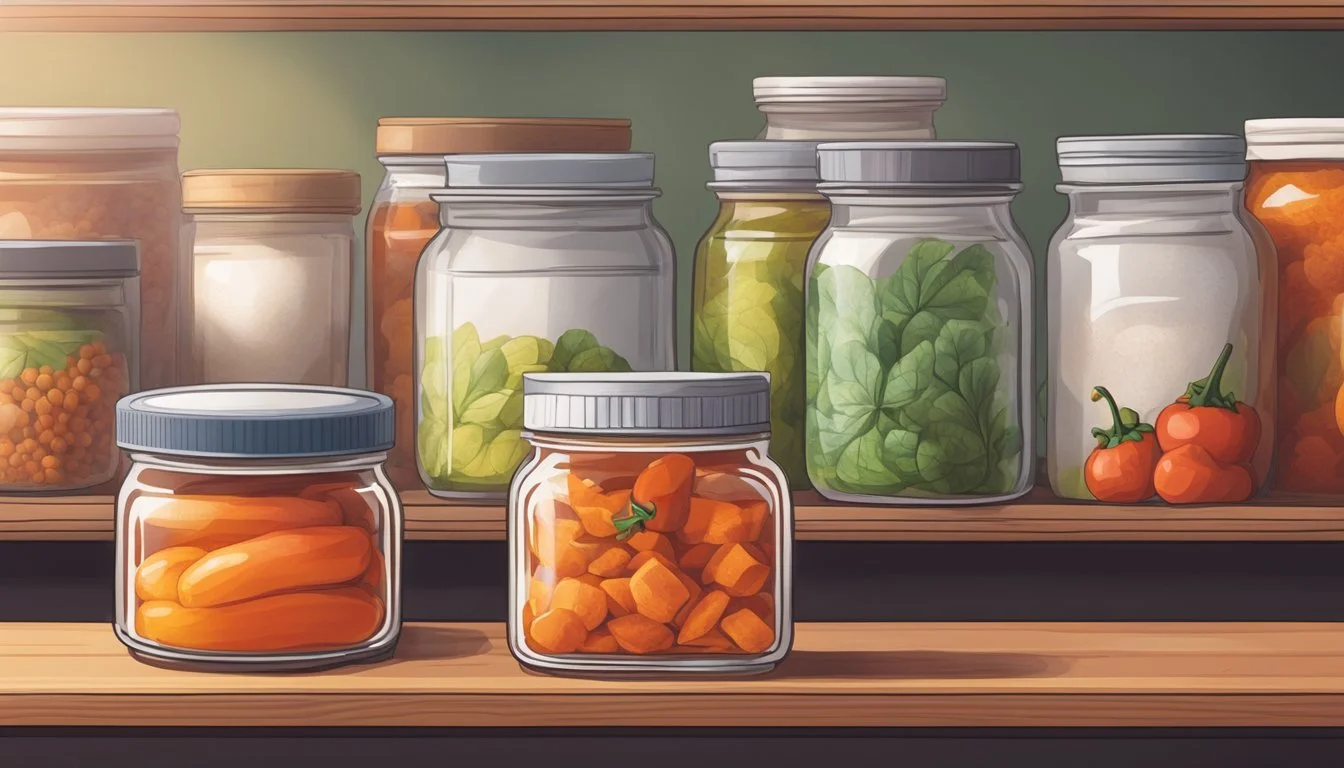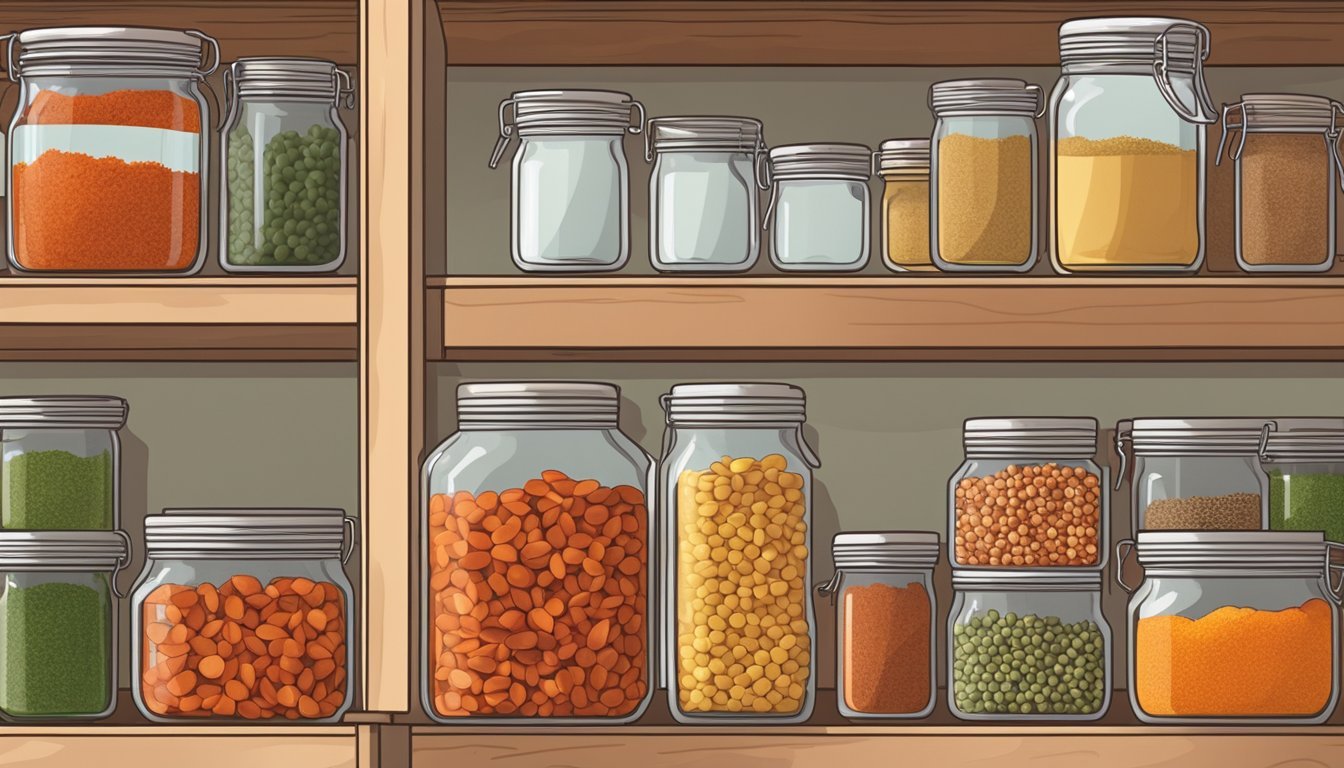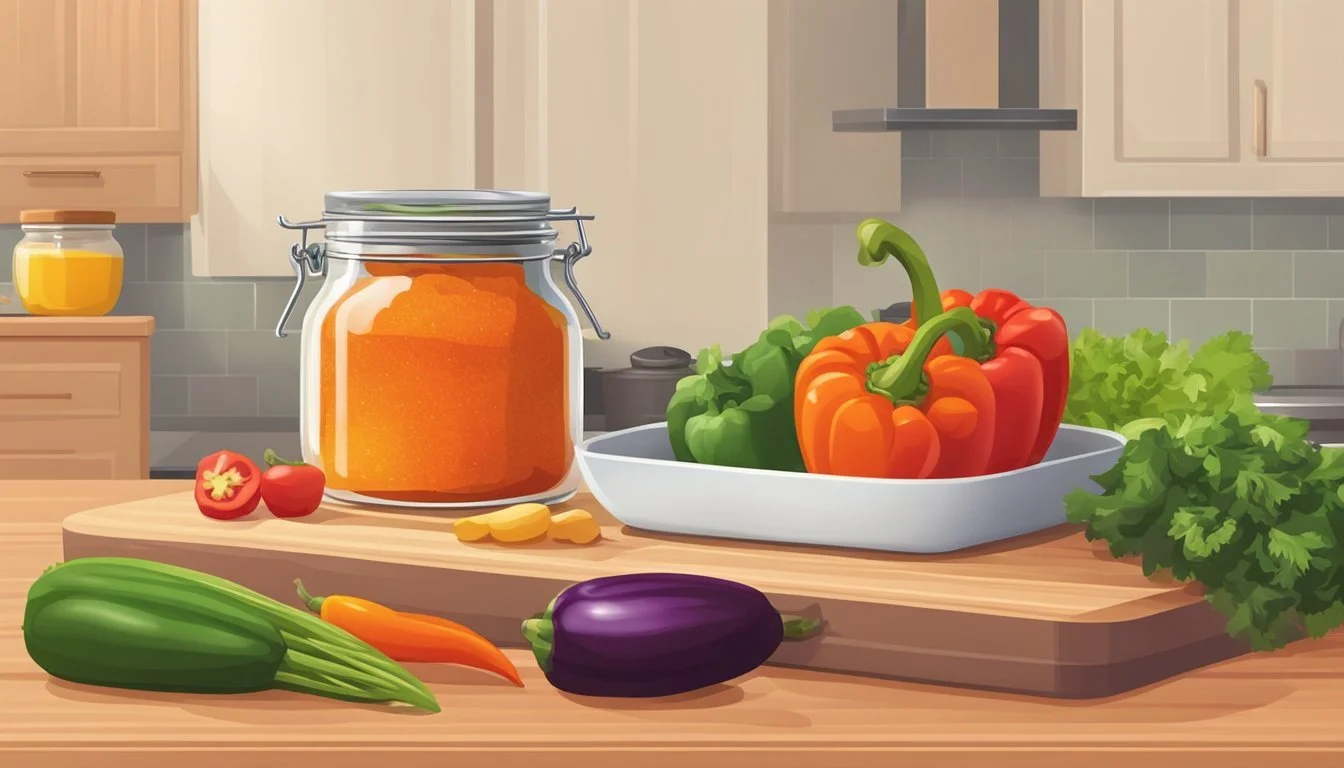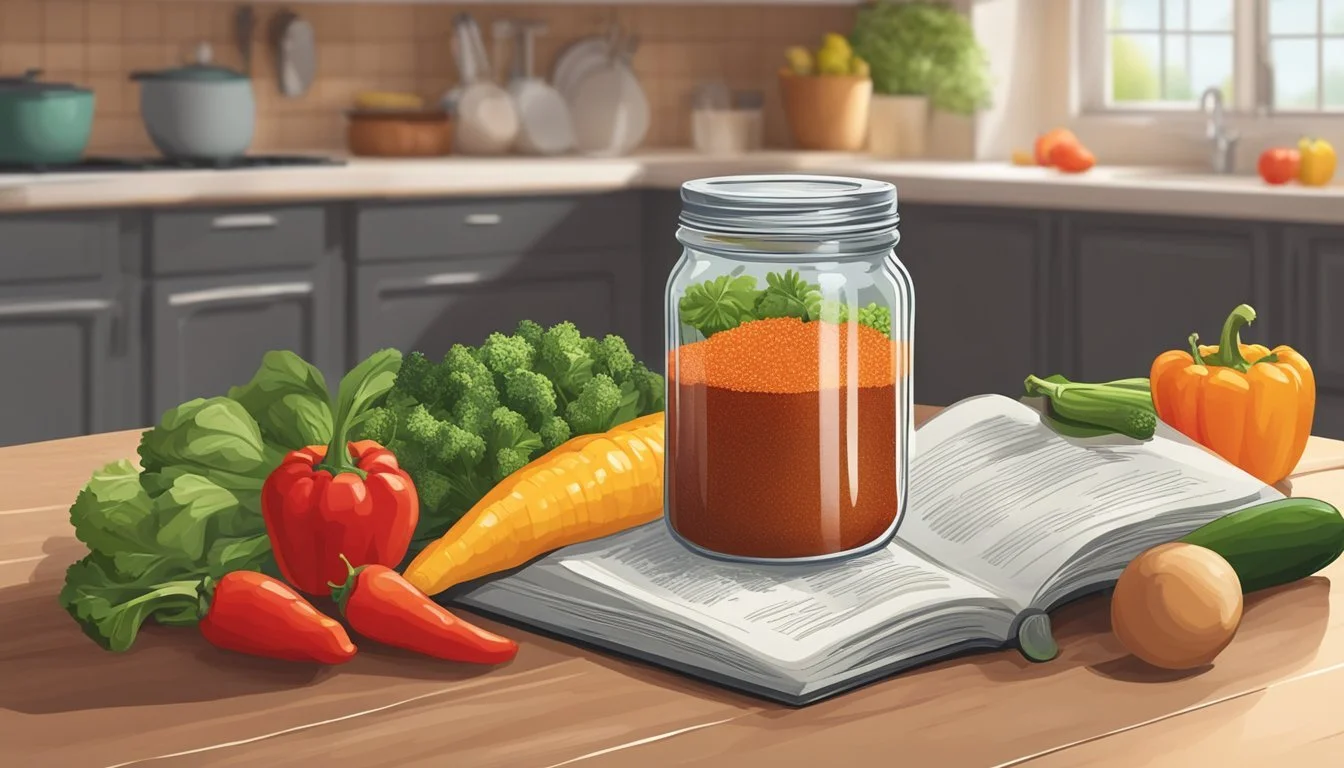How Long Does Sweet Paprika Last?
Shelf-Life and Storage Tips
Sweet paprika (how long does sweet paprika last?), prized for its mild sweetness and vibrant color, often raises questions regarding its shelf life and storage practices. Ground spices, such as sweet paprika, have a finite period of aromatic potency, typically lasting 2-3 years when stored properly. As a powdered spice, paprika's shelf life is influenced by various factors, including exposure to light, heat, and moisture, each capable of accelerating the loss of flavor and color.
To ensure that sweet paprika retains its characteristic qualities, it should be stored in an airtight container, shielded from sources of heat and light. Refrigerating paprika can be particularly beneficial in warm climates, safeguarding the spice against humidity and temperature fluctuations that can hasten degradation.
The longevity of sweet paprika is not just about maintaining its taste, but also its contribution to the visual appeal of culinary dishes. While it may remain safe to consume beyond its peak period, its potency diminishes over time, which can affect the outcome in both flavor and presentation of recipes that call for this distinct spice.
Understanding Sweet Paprika
Sweet paprika is a vibrant ground spice, originating from red peppers. It is pivotal in both Hungarian and Spanish cuisine, offering a bright, fruity flavor without the heat found in its spicy counterparts.
Flavor Profile:
Sweetness: Distinctly mild and sweet.
Complexity: Layers of flavor without pungency.
Color Signature:
Sweet paprika is known for its bold red-orange coloration, which not only adds a pop to the aesthetic presentation of dishes but also indicates the spice's freshness and quality.
Types across Cultures:
Hungarian Paprika: Often sweeter, with a rich tradition in dishes like goulash.
Spanish Paprika: May include varieties that are smoked, imparting a different flavor profile.
As a culinary staple, chefs use sweet paprika to season meats, vegetables, and traditional soups. Its utility extends beyond taste as a garnish for an appealing visual contrast, particularly in lighter dishes like deviled eggs and potato salads.
Key Notes:
Sweet: Differentiates it from hot or smoky paprika.
Color: Radiant red-orange hue.
Use: Seasoning and garnishing for various recipes.
Cultural Significance: Integral to Hungarian and Spanish cookery.
Understanding sweet paprika extends beyond its basic taste profile, encompassing its role in the cultural fabric of European cuisines. Its importance as a spice lies as much in its flavor as in its ability to transform a dish visually and gastronomically.
Types and Varieties
When exploring the world of sweet paprika, it's important to understand the distinct varieties that come from Hungary and Spain. These types not only have unique origins but also feature different flavor profiles that are integral to their culinary uses.
Hungarian Sweet Paprika
Hungarian paprika is renowned for its rich, full flavor that is often described as fruity with a delicate sweetness. This variety, known in Hungary as "édesnemes," reflects a tradition steeped in carefully selecting the peppers and a meticulous drying process to preserve its vibrant color and taste. Hungarian sweet paprika is an essential ingredient in classic dishes like goulash and chicken paprikash, contributing to their signature warmth without overpowering heat.
Flavor Profile: Rich, fruity, mildly sweet
Culinary Uses: Soups, stews, sauces, meats
Spanish Sweet Paprika
Spanish sweet paprika, or "pimentón dulce," spirals from a different tradition, sometimes involving the peppers being smoked over oak fires, imparting a unique complexity to its flavor. In contrast to its Hungarian counterpart, Spanish paprika will often have a subtle earthiness with a gentle sweetness. It's a key spice in Spanish cuisine, playing a vital role in dishes such as paella and chorizo.
Flavor Profile: Earthy, subtly sweet, sometimes smoky
Culinary Uses: Seafood, rice dishes, cured sausages
In each region, the cultivation of the peppers and the production process are carefully managed to maintain their traditional flavors and ensure the highest quality of sweet paprika.
Sweet Paprika's Shelf Life
Sweet paprika, known for its bright red color and fruity flavor, is a staple spice found in kitchens worldwide. Its shelf life can vary depending on storage conditions, but generally, it is best used within 2 to 3 years of purchase. Sweet paprika retains its optimal quality when stored in a cool, dark place, away from direct sunlight.
Factors Affecting Shelf Life:
Moisture: Sweet paprika should be kept in an airtight container to prevent exposure to moisture, which can lead to mold growth and a loss of flavor.
Light: Exposure to light can degrade the spice's vibrant color and potency.
Potency: Over time, even properly stored sweet paprika may lose its strength, requiring larger amounts to achieve the desired flavor profile in dishes.
To check if sweet paprika has maintained its quality, one can look for:
Color: It should retain its rich red hue.
Smell: There should be no off-odors; a fresh, characteristic aroma indicates good quality.
Taste: It should not taste stale or bitter.
While sweet paprika may have a "best by" or expiration date, these are typically indicators of peak quality rather than safety. Spices, including sweet paprika, don't usually spoil in a way that makes them unsafe to consume, but their flavors do diminish over time._processors are encouraged to use their senses to gauge a spice's quality beyond the printed date. If stored under ideal conditions, sweet paprika can remain safe to use, even potentially beyond its anticipated shelf life. However, for the best culinary results, using it within its suggested timeframe is advisable.
Factors Influencing Sweet Paprika's Longevity
The shelf life of sweet paprika is notably affected by exposure to air, humidity, light, and heat. Proper storage conditions and packaging are also critical to maintaining its quality for as long as possible.
Air and Humidity
Sweet paprika's potency is compromised when exposed to air and humidity. Moisture can lead to mold growth and a lackluster flavor. To preserve its freshness, sweet paprika should be stored in an airtight container to minimize exposure to air and prevent humidity from seeping in.
Light and Heat
Light and heat sources can degrade sweet paprika's vibrant color and distinct flavor. Direct sunlight and high temperatures catalyze chemical reactions that deteriorate the spice. Therefore, it is beneficial to store sweet paprika in a cool, dark place away from exposure to light and any heat-generating appliances.
Storage Conditions
The conditions under which sweet paprika is stored can significantly extend its usable life. A pantry or cupboard, away from temperature fluctuations and cooking fumes, provides an ideal environment. Keeping the spice away from ovens, stoves, and dishwashers will help preserve its quality.
Packaging
Packaging plays a vital role in the longevity of sweet paprika. The spice should ideally be in a container that limits airflow and protects from light. Opaque, airtight containers are superior to transparent options as they shield the paprika from light and air, two factors that can hasten spoilage.
Storage Best Practices
Properly storing sweet paprika is essential for maintaining its freshness, color, and flavor. Shelf life can be extended through optimal storage conditions.
Pantry Storage
For pantry storage, sweet paprika should be kept in an airtight container to prevent exposure to moisture and air. It is crucial to place the spice in a cool, dark place away from direct sunlight or heat sources. Glass jars are a preferred option, as they do not retain odors and make it easy to check the supply level.
Container: Airtight, preferably glass
Location: Cool, dark place in the pantry
Refrigeration and Freezing
Although not always necessary, storing sweet paprika in the refrigerator can help extend its shelf life, especially in hotter climates. Ensure the spice is sealed in an airtight container to prevent condensation. Freezing is generally not recommended for paprika as it can compromise the spice's quality, but if one chooses to freeze, it must be done with care to avoid moisture accumulation.
Refrigeration: Airtight container, in the fridge
Freezing: Not recommended; potential quality loss
Signs of Spoilage and Potency Loss
When assessing sweet paprika for spoilage and potency loss, there are specific signs that one should look for. Although sweet paprika does not spoil in the traditional sense, as it's not prone to developing mold due to its dry form, it can deteriorate in quality over time.
First, potency loss becomes evident when the vibrant color of sweet paprika begins to fade. The bright red hue of fresh sweet paprika is a telltale marker of its potency, which diminishes as the spice ages.
Next, a decrease in aroma is a clear indicator of potency loss. Sweet paprika should have a distinct, slightly sweet and warm fragrance. When this aroma is no longer perceivable, the spice has likely lost much of its essential oils, making it less effective in cooking.
Here are additional indicators:
Texture Changes: Fresh sweet paprika should be free-flowing. If it starts to form clumps or appears caked, this can indicate that moisture, possibly through condensation, has gotten into the container, affecting the texture and potentially leading to spoilage.
Flavor: The flavor potency is crucial, and a dull or bland taste when sampled signifies that the paprika has lost its defining characteristics.
Moldy Appearance: Although it's rare for sweet paprika to become moldy if kept dry, any visible mold spots mean the paprika is no longer safe for consumption and should be discarded immediately.
To ensure sweet paprika retains its quality, it should be stored properly: in a cool, dark place away from heat sources and in an airtight container to prevent exposure to air and moisture.
Culinary Uses of Sweet Paprika
Sweet paprika is celebrated for its versatility in recipes, infusing dishes with its vibrant color and mild sweetness. This spice excels not only as a garnish but also as a key ingredient in flavoring a multitude of dishes.
Seasoning and Garnishing
Sweet paprika is commonly sprinkled over foods as a garnish to add a pop of color and a hint of flavor without overpowering the dish. Its bright red-orange hue is visually appealing on deviled eggs and potato salad. Chef’s frequently employ it to season meats, providing a subtle complexity that can lift a simple recipe to new heights. In Eastern European cuisine, sweet paprika is essential for traditional dishes like goulash, where it imparts a signature warmth and aroma.
Flavor Enhancements in Cooking
Incorporating sweet paprika into the cooking process enhances both the aroma and taste of food. It’s a backbone in the preparation of stews and soups, melding with liquids to release its sweet and fruity undertones. Sweet paprika also finds its way into marinades and sauces, offering a depth of flavor and richness to dishes. The spice works well with a variety of meats, and can transform a simple piece of chicken or pork into a flavorful main course. In cooking, the use of sweet paprika isn't just about taste; it also adds a visually enticing element to sauces and salsas.
Alternatives and Substitutes
When sweet paprika is unavailable, cooks can confidently select from various substitutes to achieve similar flavor profiles in their dishes.
Smoked Paprika: (how long does smoked paprika last?) This variety imbues recipes with a distinctive smokiness and can replace sweet paprika to add depth. It's particularly fitting for meat rubs and stews.
Hot Paprika and Cayenne Pepper: Both carry a stronger heat compared to sweet paprika. They should be used sparingly to avoid overpowering a dish. For a more accurate flavor match, combine hot paprika or cayenne with a touch of sugar.
Substitute Flavor Note Heat Level Use Case Smoked Paprika Smoky, earthy Mild to medium Best for grilling, stews, and smoky sauces Hot Paprika Spicy, slightly sweet Medium to hot Ideal for adding a spicy kick to any dish Cayenne Pure heat, pungent Hot Use in moderation; blend with sweet ingredients Cayenne Pepper Sharp, intense Very hot Perfect for dishes that demand a spicy character
In recipes calling for sweet paprika for its color rather than flavor, cooks might consider alternatives like tomato paste or red bell pepper powder to mimic the hue without significantly altering taste.
These suggestions allow for flexibility in the kitchen, ensuring that the absence of sweet paprika does not compromise the integrity of a dish. Each alternative offers unique characteristics that should be carefully measured according to one's taste preference and heat tolerance.
Health Benefits and Nutritional Value
Sweet paprika, known for its rich red hue and mellow flavor, also offers a variety of health benefits and nutritional content. It is a source of several antioxidants, which are substances that can help protect the body's cells from damage. These antioxidants include vitamin C, carotenoids, and capsaicin, the compound that can also contribute to the spice's mild heat.
Nutritionally, sweet paprika is low in calories yet contains a notable amount of vitamins and minerals. One tablespoon (about 6.8 grams) typically contains:
Calories: 19
Protein: Less than 1 gram
Fat: Less than 1 gram
Fiber: 2.5 grams
Vitamin A: 3,560 IU (71% of the Daily Value)
Vitamin E: Present in small amounts
Vitamin B6: 0.3 milligram (14% of the Daily Value)
In addition to vitamin A, which is vital for maintaining good vision and immune function, sweet paprika also provides vitamin B6, crucial for various bodily functions, including metabolism and brain health.
The presence of vitamin C in sweet paprika plays a role in bolstering immune function. This essential nutrient contributes to the immune system's defense against pathogens and aids in overall health maintenance.
Regular inclusion of sweet paprika in one's diet can thus be part of a balanced approach to provide the body with beneficial compounds and nutrients, which may support overall health and wellness.
Additional Tips and Tricks
When storing sweet paprika, one should consider it as a non-perishable food item that, while not prone to spoilage in the traditional sense, does suffer from quality degradation over time. Here are strategies to keep sweet paprika fresh and vibrant in flavor:
Storage Location: Always store sweet paprika in a cool, dark place away from direct sunlight. Cabinets or pantries away from heat sources are ideal.
Airtight Containers: Transfer sweet paprika to an airtight container if not in one already. This practice prevents air exposure which can rapidly degrade its flavor and color.
Factors to Avoid Reason Humidity Can lead to clumping and mold growth. Oxygen Speeds up the loss of flavor and aroma. Light Can cause fading of the vibrant color.
Refrigeration: In hotter climates, consider refrigerating sweet paprika to extend its shelf life, ensuring it's in an airtight container to prevent moisture from affecting it.
Labeling: Label containers with the purchase date. Sweet paprika typically maintains its potency for 2-3 years, but it's helpful to know how long you have had it.
Usage Habits: Minimize opening the container frequently. Take what's needed for a recipe and promptly close the container to reduce air exposure.
Careful attention to these storage tips should help maintain the quality of sweet paprika and ensure its role in enhancing culinary dishes remains robust.



